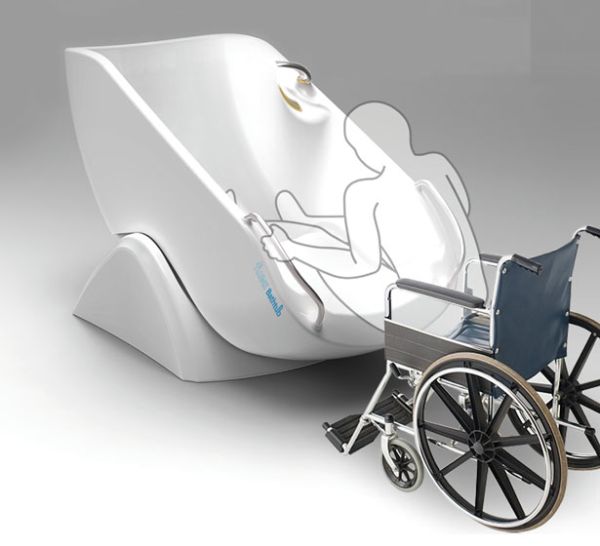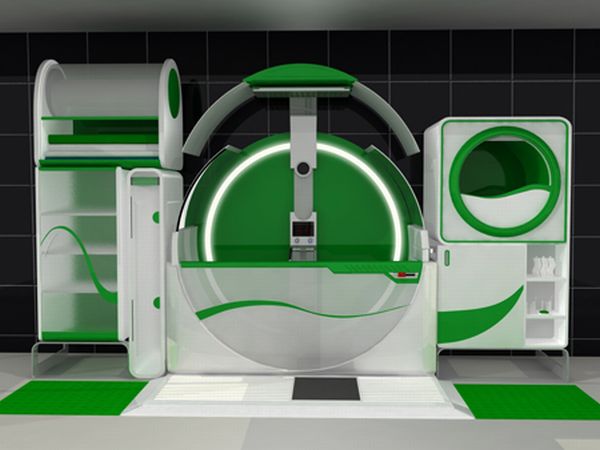Gone are the days when the disabled had to look up at those who are able for everything. Nowadays, with modernization, this is no longer the case. Technology is making the disabled more self-reliant than they ever were. No matter whether it is creative wheelchairs, fashion accessories or even toilets, designers are developing revolutionary concepts to help the disabled. Hubless wheelchair is one such pathbreaking concept. It sacrifices neither on utility nor on design. This and the other concepts mentioned in the article clearly define the ideal way to design products for the disabled.
Hubless Wheelchair

With latest developments in technology, modern designers seems to prefer the minimalistic approach in their designs. Inspired by the hubless motorcycles and bicycles, designer Jonathan O’Conner has designed a ‘hubless wheelchair’. It will make commuting effortless for the physically challenged. Intended for young and active disabled individuals, the hubless wheelchair comes with a supportive mesh fabric seat. This seat is suspended on a lightweight carbon fiber frame. The pushrim, extends past the tire and connects to the rotating center-free rim. On the other hand, the outer rim (tire and pushrim) bear down on a non-rotating inner rim. Moreover, this rim is directly attached to the frame. Hubless wheels not just give a sleek look to the wheelchair, but they also help the user. They can help them to move it freely and briskly without putting too much effort.
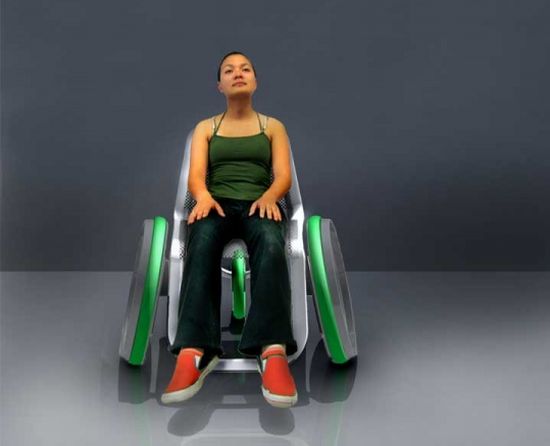

Some more concepts for the disabled similar to Hubless Wheelchair
1. GlideCycle

If you think running and riding a bike requires complete fitness or extra physical strength, think again. Here is a revolutionary physical trainer that will make you reconsider your perception about outdoor sports. Named “GlideCycle,” the latest design from Oregon is essentially a modified version of a cycle. It allows the disabled to enjoy outdoor sports with equal ease as their able-bodied counterparts do. Generating power with just one leg or even two powerless legs, the GlideCycle supports the body of the rider. It does so with its patented ergonomic saddle, quite similar to a bicycle seat, without putting too much pressure on the body. With GlideCycle outdoor activities like running or cycling are no more a dream for the disabled.
2. Overhead Projector Desk
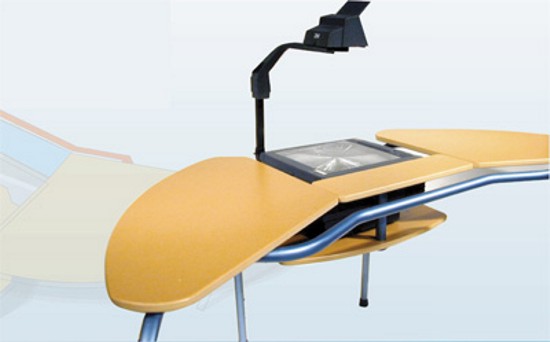
Disabled teachers often have to compromise on certain aspects of teaching. There’s no doubt that their physical disabilities never succeed in casting a shadow over their mental prowess, but when a particular project or lecture calls for a slide show using an overhead projector, these wheelchair-confined geniuses have to undergo severe stress due to limited mobility. Designer’s Reinier Halbertsma and Sarah Hay from Carleton University’s School of Industrial Design have conceptualized a special desk that is aimed at giving the much needed support to disabled teachers at such occasions. Furthermore, the Overhead Projector Desk is designed in such a way that the projector settles itself at the center of the table, leaving enough space on either side. The central grab rail presents extended mobility to the wheelchair-confined person and allows for easy handling of the slides.
3. Tilt headset

People with physical impairments often find it difficult to hold and activate the buttons on a phone. Providing a solution, designer Ryan Parry in association with GlobiGames Ltd has devised an innovative headset that allows the users to navigate through menus on their phone simply by moving their head side to side and nodding to select the highlighted option. Hailed as “Tilt,” the mobile phone interface device lets the people with impaired manual dexterity scroll through a very basic menu interface by tilting their head to the right. They can place their head to a vertical position to hold the current selection in place, and nod to accept the option. While on the other hand, tilting the head toward the left side allows the users to scroll through menus in the opposite direction, providing quicker navigation.
The in-ear plug design holds onto contours of the ear securely, and comes with three different sized rubber covers to ensure a perfect fit. When the headset is removed from the wrist piece, a hall’s effect sensor senses the missing magnet, and activates the headset, providing longer battery life. Moreover, the headset is highly customizable, with plastic side panels in various designs available to suit every mood. When not in use, the headset is held on a wristband, and with a smell sweeping motion, the user can apply the headset to their ear without using their hands.
4. BackSaver: Portable wheelchair lifter
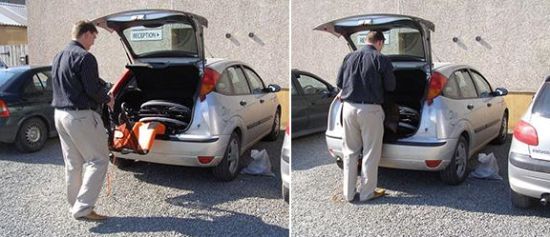
Winning entry at 2010 Naidex New Product of the Year Award, the “BackSaver” is an elegant portable solution for lifting a wheelchair into your car storage, so the wheelchair users could access any vehicle with their mobility devices without any trouble. All you need to do is “attach one end rod to the boot space of the vehicle, roll out the BackSaver, place the wheelchair on the BackSaver as close as possible to your car, grab the handles and then walk towards the boot space as you lift and slide the chair within.” Manufactured by Mangar International, the BackSaver makes life mobile and easy for the disabled.
5. Seesaw shaped bathtub
The design called ‘Flume Bathtub’ has been designed by a group of Korean designers, which can help the disabled people to take a shower. Owing to the tilted shape of the bathtub, it makes it easy for disabled people to use it.
First, the bathtub tilts towards the user making it easy for him or her to sit. This aspect makes it easier for disable people since they can seamlessly get into the tub. Once water starts to fill the tub, the weight lifts the tub into a position wherein it is parallel to the ground. In addition, after the bath when water drains out, it returns to its original tilted position while allowing the disabled person to exit easily.
6. All-in-one bathroom
The all-in-one bathroom consists of three parts. The first part on the left is for storing and drying clothes. The second section in the middle is where bath system is present with a rooftop shower attached. A disabled person can sit down easily and take bath in a convenient manner. Last part on the right is for keeping the accessories such as soap and shampoo.
There are various other types of bathroom fittings which have been designed to help disabled people. It is important to understand the requirements and then head out for selecting the bathroom fittings. Bathroom fittings for disabled people are available at affordable prices, so the concern should be about selecting services which match the requirements of the disabled people.



